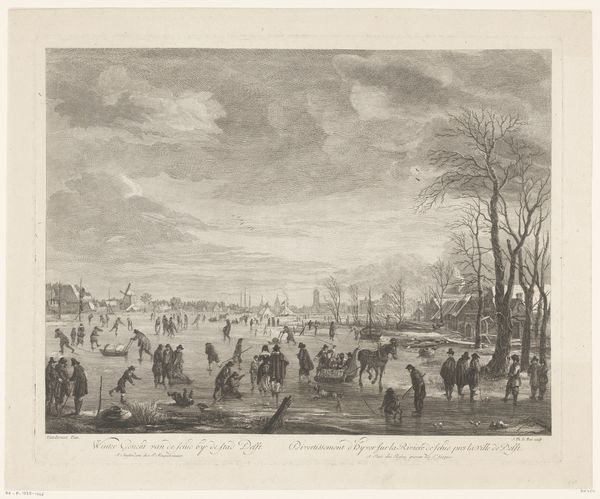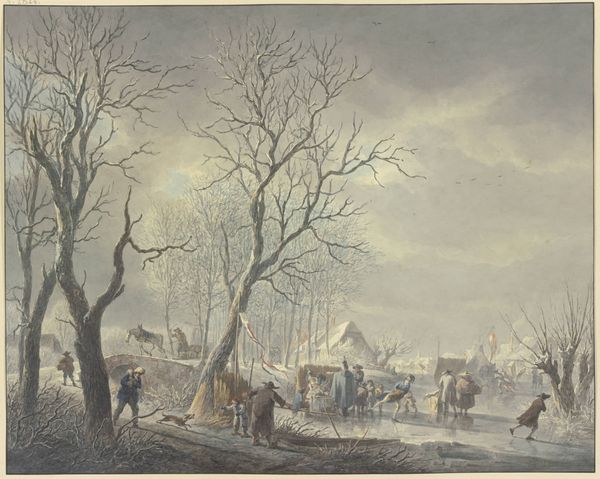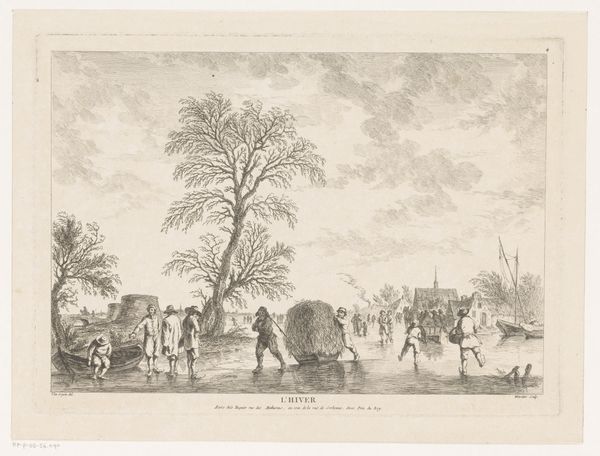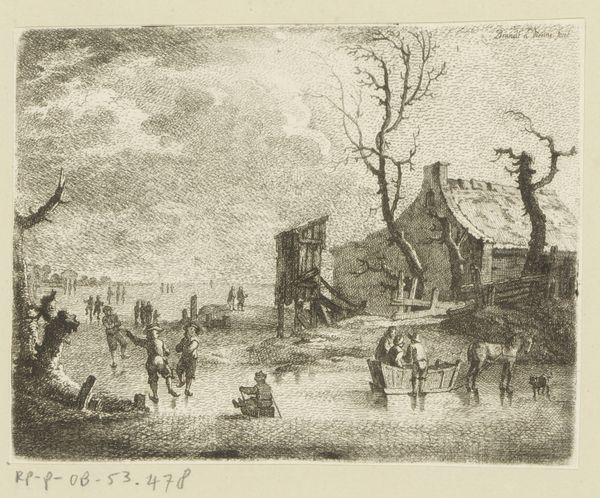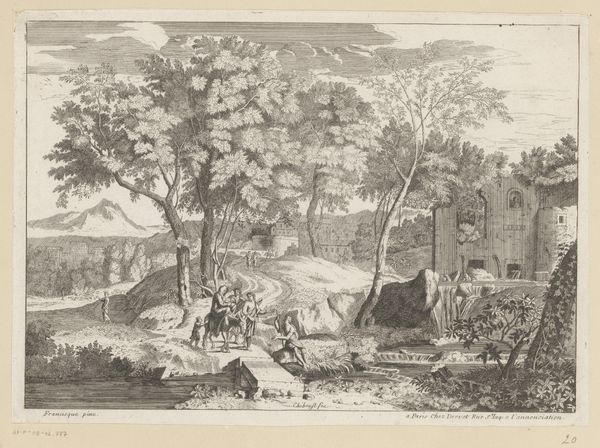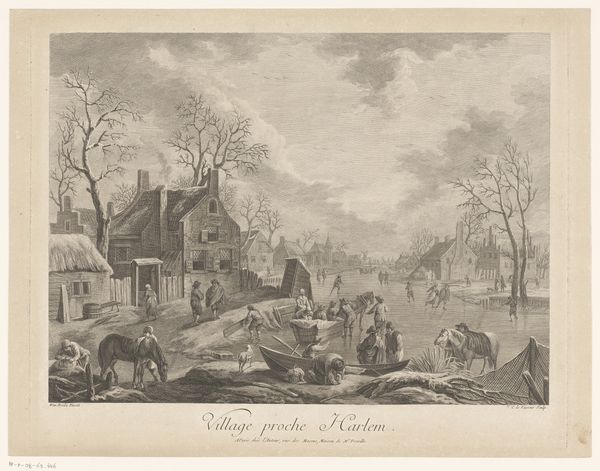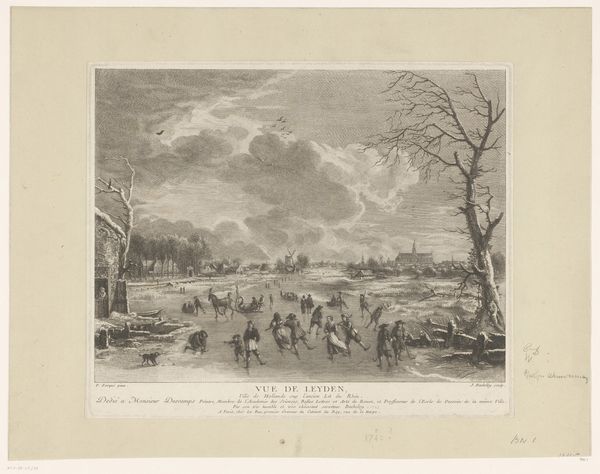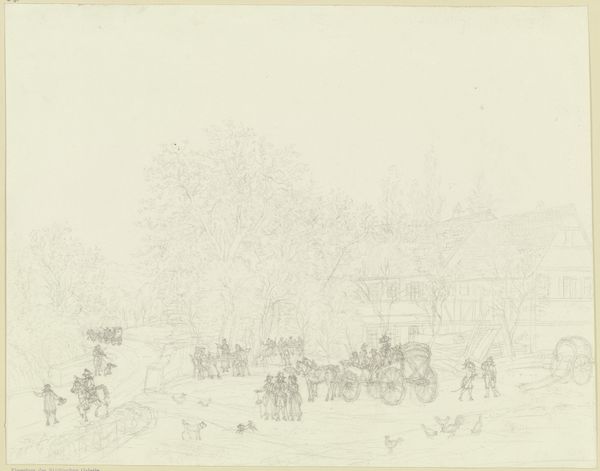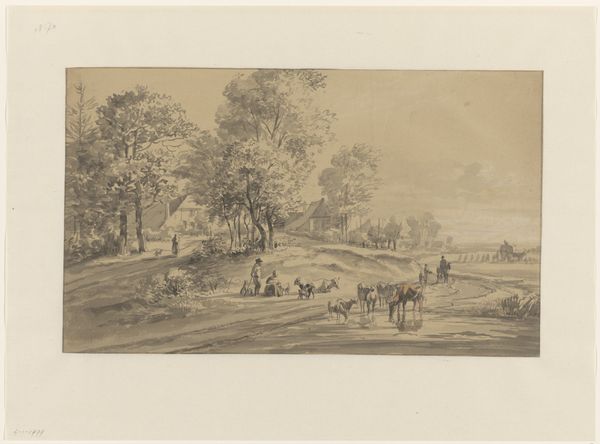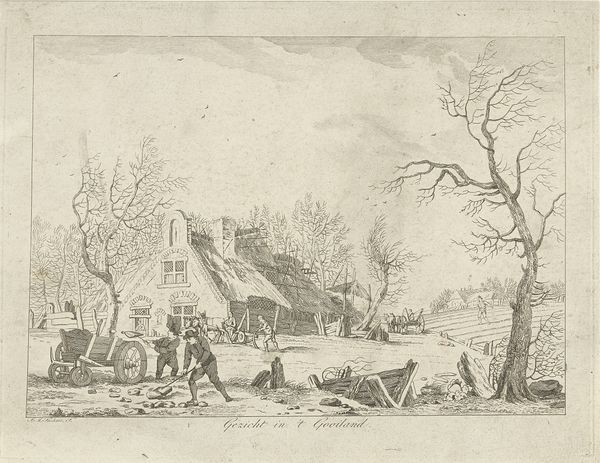
Winterlandschaft, Schlittschuhläufer auf dem Kanal, über den eine steinerne Brücke führt 1798
0:00
0:00
drawing, ink
#
drawing
#
landscape
#
ink
#
romanticism
#
cityscape
Copyright: Public Domain
Editor: This drawing, "Winterlandschaft, Schlittschuhläufer auf dem Kanal, über den eine steinerne Brücke führt" by Abraham Teerlink, dating back to 1798, really captures a bustling winter scene. There's almost a chaotic energy despite the cold, and I wonder, how do you read the social dynamics in this piece? Curator: The image gives us a snapshot of Dutch society at the cusp of major historical shifts. The frozen canal acts as a stage where social classes mingle, though subtly differentiated by their attire and activities. The carriage on the bridge and well-dressed figures on the bank hint at an affluent class observing, while others engage in more precarious fun on the ice. Editor: Precarious indeed! There are people falling, pushing each other… Were these winter scenes a common subject at the time, and did they carry a particular symbolic weight? Curator: Winter landscapes, especially those with people engaging in leisure, had become popular in Dutch art since the 17th century, often seen as celebrations of community and resilience amidst harsh conditions. Teerlink's version, created during a period of political and social upheaval, can be interpreted as a nostalgic look back at communal harmony, perhaps reflecting anxieties about changing social structures brought about by revolutionary ideals. Editor: So, it's less about the simple joy of winter and more about representing an idealized community facing an uncertain future? Curator: Precisely. And note how the church steeple and the solid architecture in the background ground the fleeting joys on the ice in enduring institutions, projecting hope and stability. Considering the artwork's home in the Städel Museum also raises interesting questions about how its meaning is continuously negotiated through its display within this context. Editor: That’s a great point, considering the museum's role in shaping our understanding of history! This drawing offers a much deeper reading than I initially anticipated. Thank you. Curator: My pleasure. It highlights the power of art to subtly comment on and shape our understanding of societal values, even through seemingly simple depictions of everyday life.
Comments
No comments
Be the first to comment and join the conversation on the ultimate creative platform.

